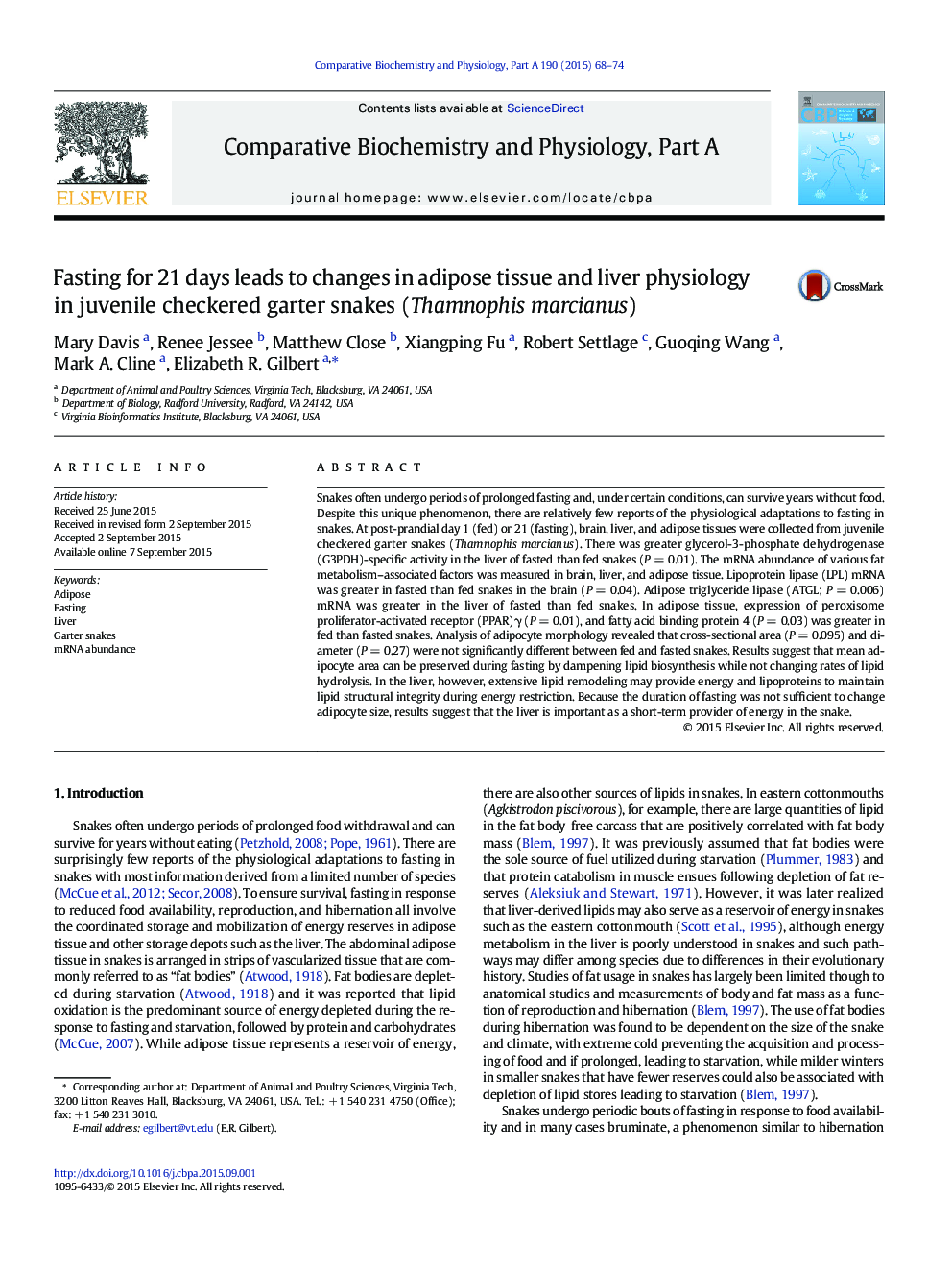| Article ID | Journal | Published Year | Pages | File Type |
|---|---|---|---|---|
| 1971893 | Comparative Biochemistry and Physiology Part A: Molecular & Integrative Physiology | 2015 | 7 Pages |
Snakes often undergo periods of prolonged fasting and, under certain conditions, can survive years without food. Despite this unique phenomenon, there are relatively few reports of the physiological adaptations to fasting in snakes. At post-prandial day 1 (fed) or 21 (fasting), brain, liver, and adipose tissues were collected from juvenile checkered garter snakes (Thamnophis marcianus). There was greater glycerol-3-phosphate dehydrogenase (G3PDH)-specific activity in the liver of fasted than fed snakes (P = 0.01). The mRNA abundance of various fat metabolism–associated factors was measured in brain, liver, and adipose tissue. Lipoprotein lipase (LPL) mRNA was greater in fasted than fed snakes in the brain (P = 0.04). Adipose triglyceride lipase (ATGL; P = 0.006) mRNA was greater in the liver of fasted than fed snakes. In adipose tissue, expression of peroxisome proliferator-activated receptor (PPAR)γ (P = 0.01), and fatty acid binding protein 4 (P = 0.03) was greater in fed than fasted snakes. Analysis of adipocyte morphology revealed that cross-sectional area (P = 0.095) and diameter (P = 0.27) were not significantly different between fed and fasted snakes. Results suggest that mean adipocyte area can be preserved during fasting by dampening lipid biosynthesis while not changing rates of lipid hydrolysis. In the liver, however, extensive lipid remodeling may provide energy and lipoproteins to maintain lipid structural integrity during energy restriction. Because the duration of fasting was not sufficient to change adipocyte size, results suggest that the liver is important as a short-term provider of energy in the snake.
